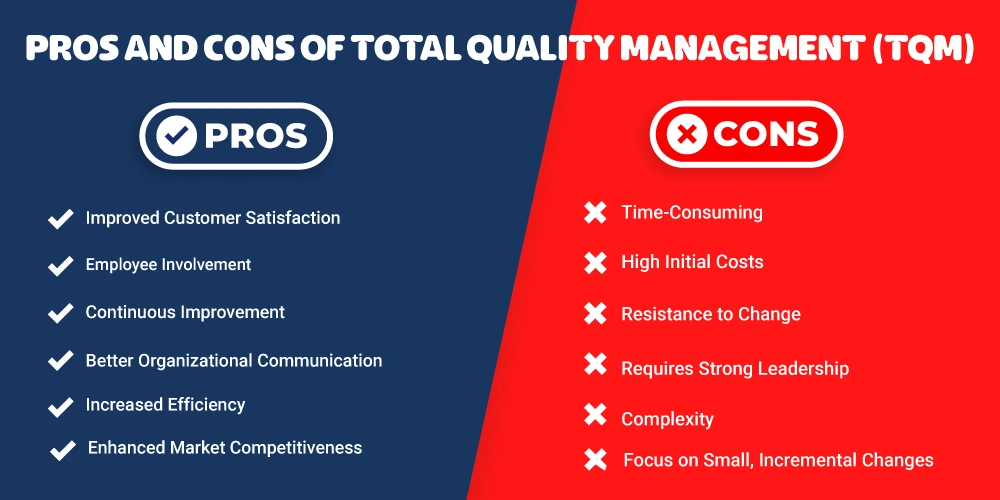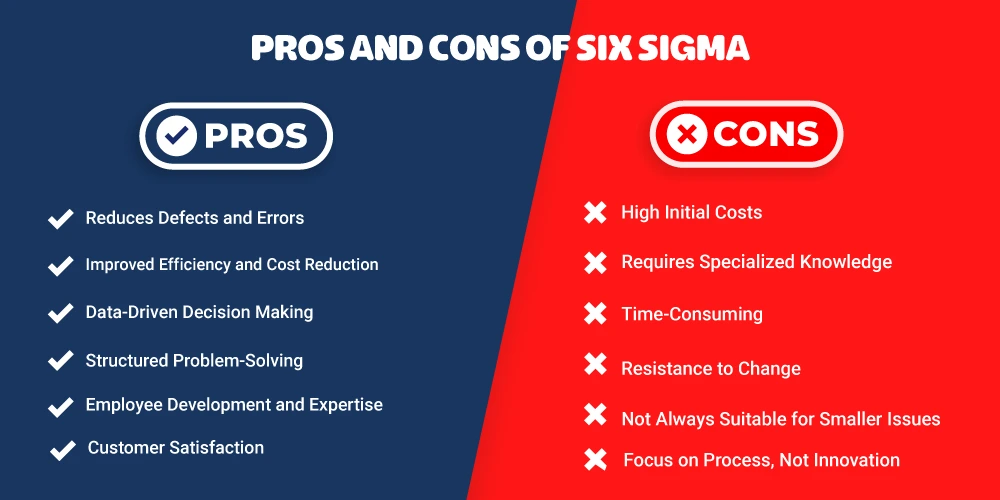Initial Production Inspection (IPI)
Quality control is not just about checking the finished product; it's about taking the right steps from ...
By AMREP | Posted on March 12, 2025

The success of an organization is closely tied to the effectiveness of its continuous improvement (CI) efforts. Total Quality Management (TQM) and Six Sigma are key CI methodologies driving overall performance and quality enhancement.
Six Sigma is a more focused, data-driven approach with a specific goal of defect reduction, while TQM is an organization-wide cultural approach to continuously improve quality and customer satisfaction. Both methodologies seek quality improvements but differ significantly in scope, approach, and implementation.
TQM is a comprehensive approach focused on improving quality across the entire organization. It involves every employee and every process, ensuring that quality is maintained and enhanced at all levels.
Six Sigma is a data-driven methodology designed to identify and eliminate defects in processes. Its main objective is to improve the quality of process outputs by identifying and removing causes of variation and defects.
Must see: 5 Phases of Six Sigma
| Aspect | Total Quality Management (TQM) | Six Sigma |
|---|---|---|
| Definition | A holistic approach to improving quality in all organizational processes. | A data-driven approach focused on reducing defects and variability in processes. |
| Focus | Continuous improvement in all areas of the organization. | Achieving near perfection (3.4 defects per million opportunities). |
| Methodology | Based on a customer-focused approach with continuous improvement and involvement of all employees. Uses PDCA (Plan, Do, Check, Act) for continuous quality improvement. | Primarily uses DMAIC (Define,Measure,Analyze,Improve,Control) methodology. |
| Goal | Improve overall quality across the organization. | Reduce defects to a near-zero level in specific processes. |
| Scope | Organization-wide, including all departments and employees. | Often project-specific, with a focus on process improvement. |
| Tools & Techniques | Includes quality circles, benchmarking, and quality audits. | Uses statistical tools like process mapping, control charts, and regression analysis. |
| Employee Involvement | High involvement from all levels of the organization. | Primarily involves specialized roles such as Green Belts, Black Belts, and Champions. |
| Implementation | Long-term, ongoing approach requiring a cultural shift in the organization. | More focused, structured projects with a defined time frame. |
| Leadership | Emphasizes leadership commitment at all levels, including top management. | Leadership comes from specific roles like Six Sigma Champions and Black Belts. |
| Measurement | Focuses on customer satisfaction and overall quality metrics. | Measures performance using statistical data and the defect rate. |
| Philosophy | Quality is everyone's responsibility. | Quality is driven by data and aims for defect elimination. |
| Timeframe | Long-term, with gradual improvements over time. | Short-term, often project-specific with defined milestones. |
Here are the key similarities between Total Quality Management (TQM) and Six Sigma:
| Similarity | Explanation |
|---|---|
| Focus on Quality Improvement | Both TQM and Six Sigma aim to improve the quality of products, services, and processes within an organization. |
| Customer-Centric | Both methodologies emphasize customer satisfaction as a central goal, ensuring that improvements align with customer needs and expectations. |
| Data-Driven Approach | Both rely on data collection, analysis, and feedback to identify areas for improvement and make informed decisions about process changes. |
| Continuous Improvement | Both promote ongoing, incremental improvements in processes over time, though TQM focuses on organization-wide improvements, and Six Sigma focuses on specific projects. |
| Employee Involvement | Both methodologies require active participation from employees at various levels to identify issues, develop solutions, and implement improvements. |
| Problem-Solving | Both TQM and Six Sigma emphasize structured problem-solving approaches to address quality-related issues in processes and products. |
| Leadership Commitment | Both methodologies stress the importance of leadership commitment and support to ensure the successful implementation and sustainability of quality initiatives. |
| Use of Standardized Tools | Both TQM and Six Sigma utilize various quality management tools (e.g., Pareto analysis, root cause analysis, process mapping) to aid in process improvement. |
| Focus on Process Optimization | Both seek to optimize processes by reducing defects, variability, and inefficiencies to improve performance and quality. |
Total Quality Management (TQM) is a comprehensive approach to improving quality across all aspects of an organization. It aims to embed quality in every process, product, and service. Here are the key pros and cons of implementing TQM in an organization:

TQM focuses on meeting or exceeding customer expectations, which helps build stronger relationships and loyalty.
TQM encourages all employees to participate in decision-making and problem-solving. This leads to higher morale and a sense of ownership in the company's success.
TQM promotes an ongoing cycle of improvements, meaning processes and products continually evolve to become better over time.
TQM fosters open communication across departments, promoting collaboration and ensuring that everyone is aligned on goals and improvements.
By focusing on quality in every process, TQM helps identify inefficiencies and reduce waste, leading to cost savings and better resource utilization.
Organizations that embrace TQM are often able to differentiate themselves by delivering higher-quality products and services, gaining a competitive edge.
The process of implementing TQM can be slow, as it requires a long-term commitment from everyone in the organization. Achieving noticeable results can take time.
TQM requires investment in training employees, upgrading systems, and establishing new quality control processes, which can be costly upfront.
Employees and managers may resist changes, especially if they are used to traditional ways of working. Overcoming this resistance can be challenging.
TQM’s success heavily relies on committed leadership. Without strong leadership to guide and support the changes, the implementation may fail.
TQM can be complex to implement due to the broad scope of changes needed across various functions and processes. Managing this complexity can be difficult for smaller organizations.
TQM often focuses on gradual improvements rather than large, disruptive changes. This might not be suitable for organizations looking for quick, dramatic results.
Six Sigma is a data-driven methodology focused on reducing defects, minimizing variation, and improving process efficiency. It uses statistical analysis to identify problems and optimize processes. Here are the main pros and cons of implementing Six Sigma:

Six Sigma focuses on identifying and eliminating defects, aiming for 3.4 defects per million opportunities. This leads to higher-quality products and services.
By streamlining processes and reducing waste, Six Sigma can lead to significant cost savings and more efficient operations.
Six Sigma relies on quantitative data, which helps businesses make informed decisions based on facts rather than assumptions or guesswork.
The DMAIC (Define, Measure, Analyze, Improve, Control) methodology provides a clear and systematic framework for addressing problems and improving processes.
Six Sigma includes specialized training (e.g., Green Belts, Black Belts, and Master Black Belts), which develops expertise in employees and empowers them to lead improvement projects.
By improving product quality and consistency, Six Sigma can help meet or exceed customer expectations, which leads to better customer satisfaction and loyalty.
The implementation of Six Sigma often involves substantial initial investment in training, hiring skilled professionals (such as Black Belts), and purchasing software tools for data analysis.
Six Sigma relies on statistical tools and expertise, which means that a significant level of knowledge and skill is needed to implement and sustain it. This may lead to a steep learning curve for employees.
Six Sigma projects often take longer to implement, especially for complex issues. The focus on detailed data collection and analysis can slow down the process.
Employees may resist adopting Six Sigma practices due to the structured approach, the need for specialized roles, and potential disruptions to established workflows.
Six Sigma may be overkill for smaller, less complex problems. For simple improvements, the heavy emphasis on data and statistical analysis might be unnecessary.
Six Sigma is designed to reduce variation and improve existing processes, but it does not specifically foster innovation or creativity, which can limit the ability to make breakthrough changes.
TQM focuses on organization-wide involvement and long-term improvements, while Six Sigma targets specific projects with data-driven precision. Depending on your organization's needs, integrating either or both of these methodologies can significantly enhance quality, efficiency, and customer satisfaction.
At AMREP, we are committed to helping businesses adopt the right strategies for continuous improvement. Looking to implement TQM, Six Sigma, or a combination of both, our manufacturing experts provide tailored solutions to optimize your processes and elevate your performance. Let us help you achieve excellence every step of the way!
Contact Us To See What We Can Do
Call Us
Mon - Sat 9.00 - 18.00
Sunday Closed


28 - February 2025
28
February
2025
Quality control is not just about checking the finished product; it's about taking the right steps from ...

27 - February 2025
27
February
2025
Quality isn’t a choice; it’s a commitment that begins the moment production starts. PwC’s Global Manufacturing Report suggests that companies ...

19 - February 2025
19
February
2025
Companies rely on QC professionals to detect defects, prevent errors, and improve processes. But what skills are necessary for success in this field? To excel ...
